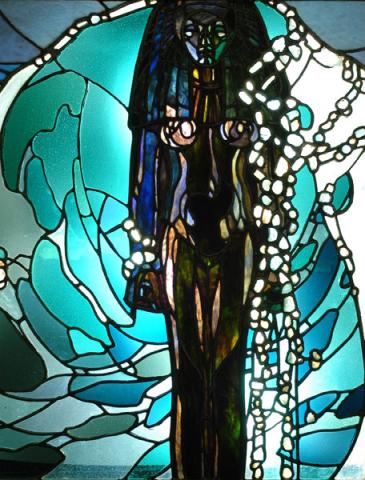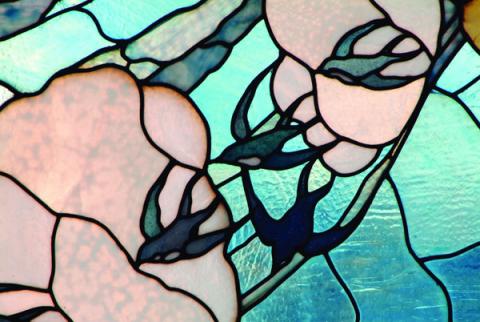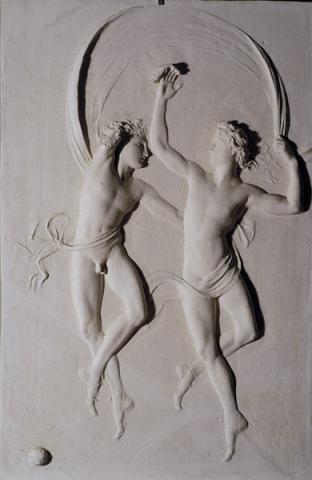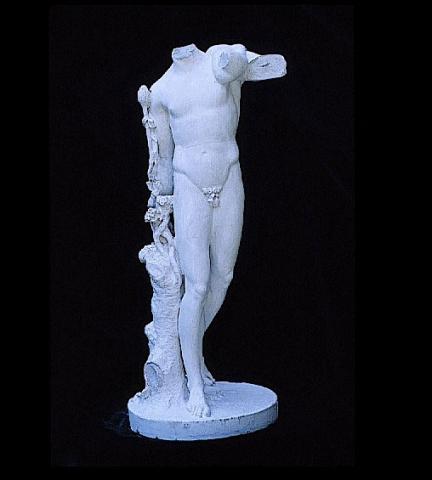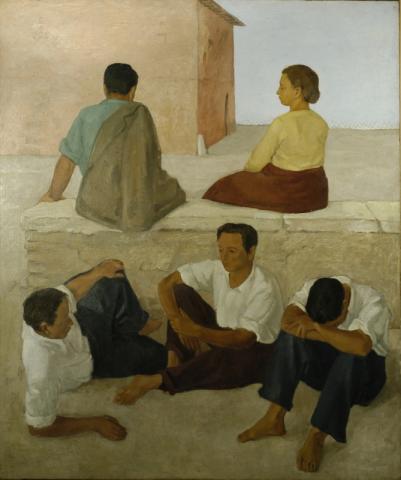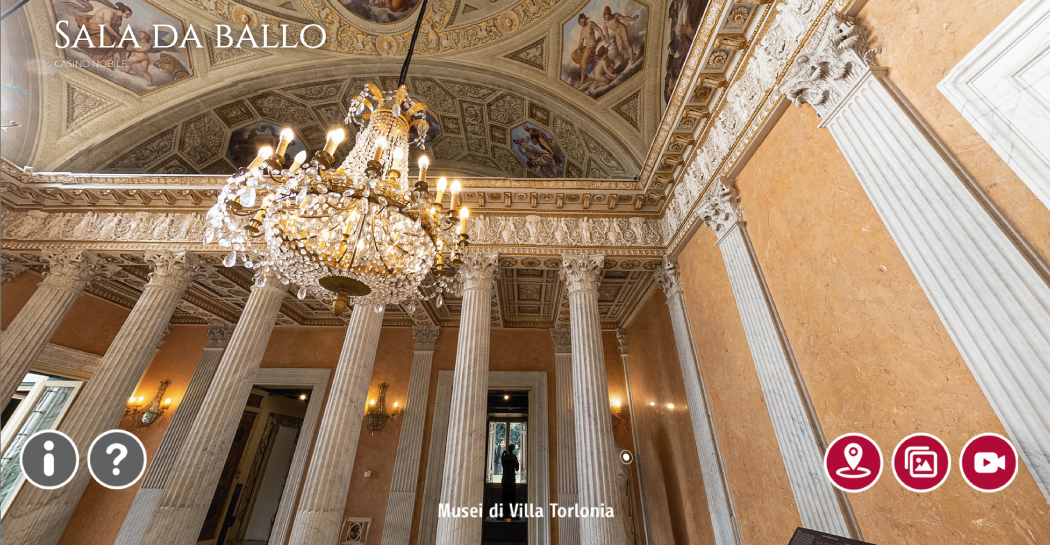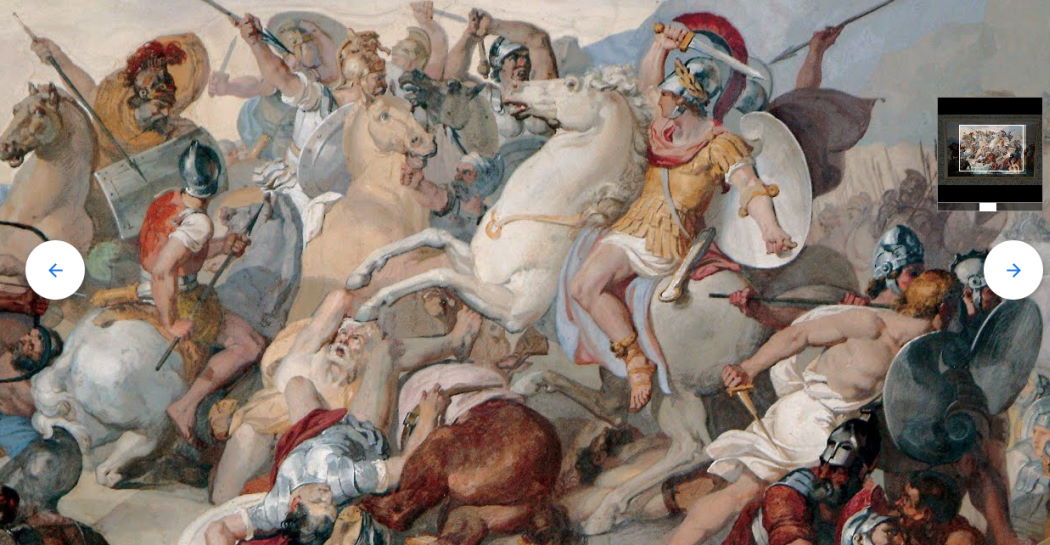The Artwork of the Month of the Museo della Scuola Romana - July 2022
July 2022
Emanuele Cavalli (Lucera, 1904 - Florence, 1981)
Meriggio, 1935
Oil on canvas, cm 175x145
Courtesy of Giuseppe Bertolami
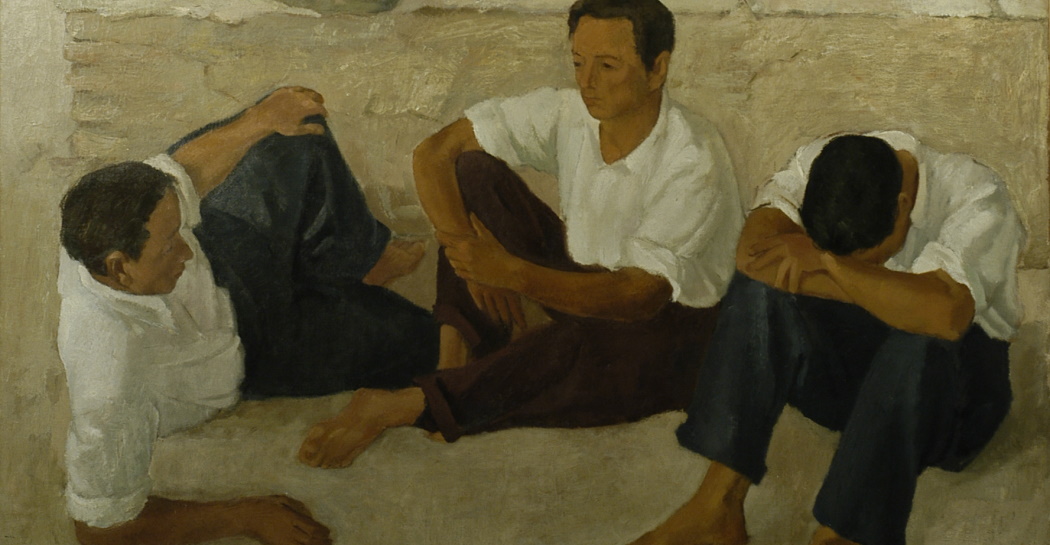
'Cavalli is the painter of the sweetness of life'. This is how the critic Waldemar George described Emanuele Cavalli's work in 1933. Like many, he was struck by the grace and exquisiteness of his works, in which the subjects are captured in suspended, crystallised moments, as in the painting Meriggio: four men and a woman are depicted during a pause in the summer sun, in the hottest hours of the day. They seem united in sharing a moment out of time, yet they do not interact and appear isolated in their own thoughts.
"I try to objectify with the utmost clarity what I feel about life by deciphering it in its universal value, i.e. stripped, as far as possible, of all contingencies - this is how Cavalli describes his creative process - The research in this 'human' sense distances me from abstract or aestheticising painting".
The setting and light of the painting probably reflect the lasting impression left on the painter by his native Apulia, from which he was always inspired even though he only lived there for short periods, as Virgilio Guzzi testifies: 'From his native Lucera E. Cavalli brought with him to Rome, where he came to stay after 1928, a disposition [...] to look at common things with eyes sensitive to the great white, lime light of those houses, to the transparency of those shadows; and, what is more, a tendency towards a taste for the simple life (against the background of sunny nature) and for paused, ritual acts".
The perfectly calibrated and rigorous composition, a characteristic of Cavalli's works that can also refer to his photographic practice, is built on horizontal planes, while the flat layering of colour is typical of tonalism, a style in which volume and space are constructed directly with colour, relying on tonal joints that define unitary forms and simplified volumes. It was around the mid-1930s that the phenomenon of tonalism became increasingly widespread, bringing to maturity the influence of Roberto Longhi's monograph on Piero della Francesca, published in 1927, from which the painters of the new generations in the Roman ambit grasped the inspiration to turn to 15th century painting. In contrast to his former companions Corrado Cagli and Giuseppe Capogrossi, Emanuele Cavalli remained faithful to tonalism throughout his artistic career, in search of that compositional and tonal harmony whose close connection to musical harmony he repeatedly emphasised.
Meriggio was exhibited, with the title Estate, at the 20th National Biennial in Venice in 1936.
Emanuele Cavalli was born in Lucera in 1904. He began painting in Rome, where he was a pupil of Felice Carena from 1921. In 1928 he stayed in Paris, Avignon and Orange for several months. Together with Corrado Cagli and Giuseppe Capogrossi, in 1932 he formed the 'Gruppo dei nuovi pittori romani' (Group of New Roman Painters), with whom he exhibited at the Bonjean Gallery in Paris in 1933. It was in the catalogue of this exhibition that the critic Waldemar George coined the term 'École de Rome' referring to their painting for the first time. In 1935, he settled with his wife Vera Haberfeld in Anticoli Corrado, where he remained for eleven years. In 1945, he obtained the chair of Painting at the Accademia di Belle Arti in Florence, which he held until 1949, when he was inexplicably not renewed. Partly due to this, a period of artistic crisis began for Cavalli who, having always remained faithful to tonalism, watched his erstwhile companions Cagli and Capogrossi successfully move towards abstract art, feeling himself ousted from artistic activity: in this period of upheaval, he went so far as to destroy a large number of his works from previous years. In 1951, he moved to Florence, where he worked until his death in 1981.
Back to the section > The Artwork of the Month of the Museo della Scuola Romana


























